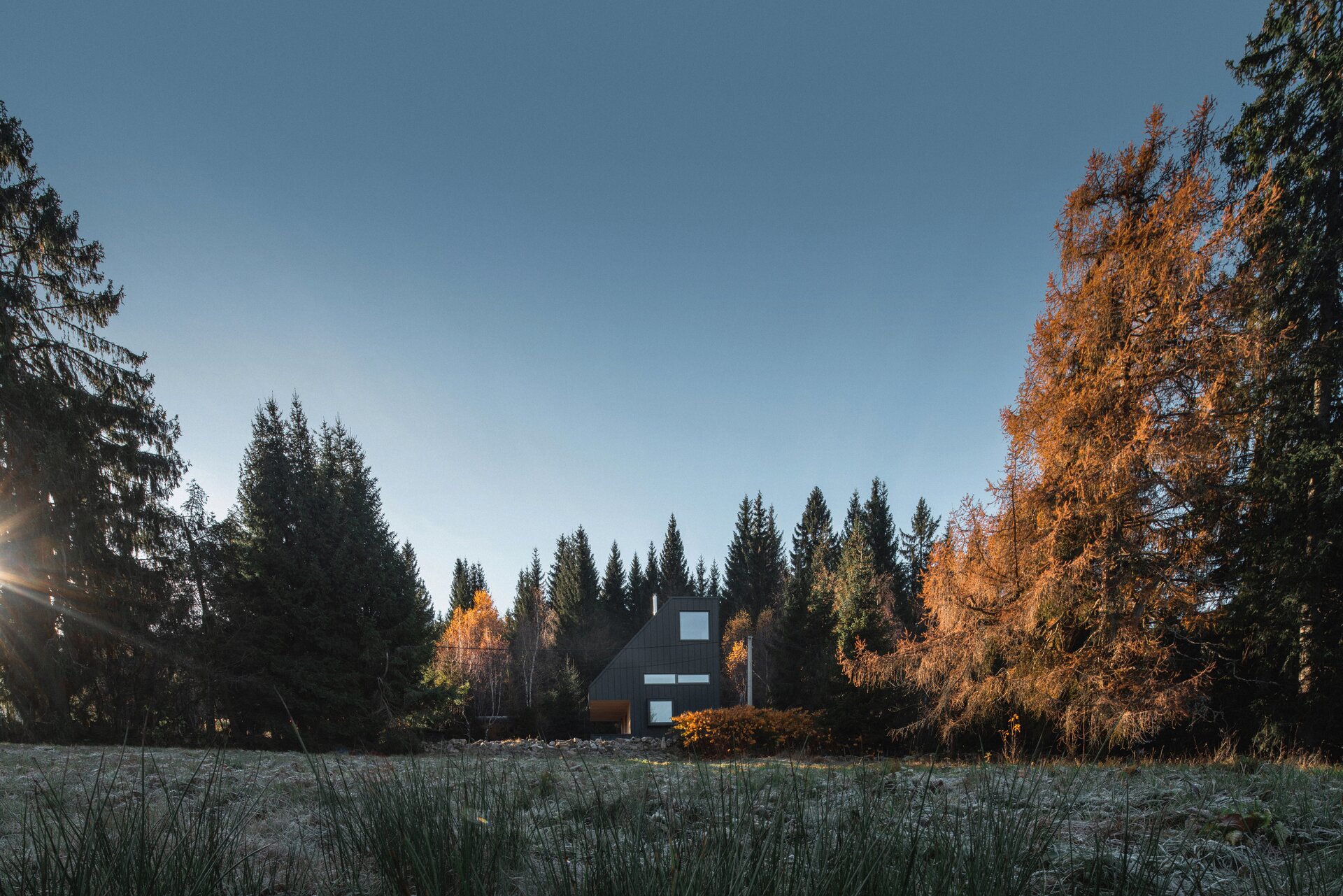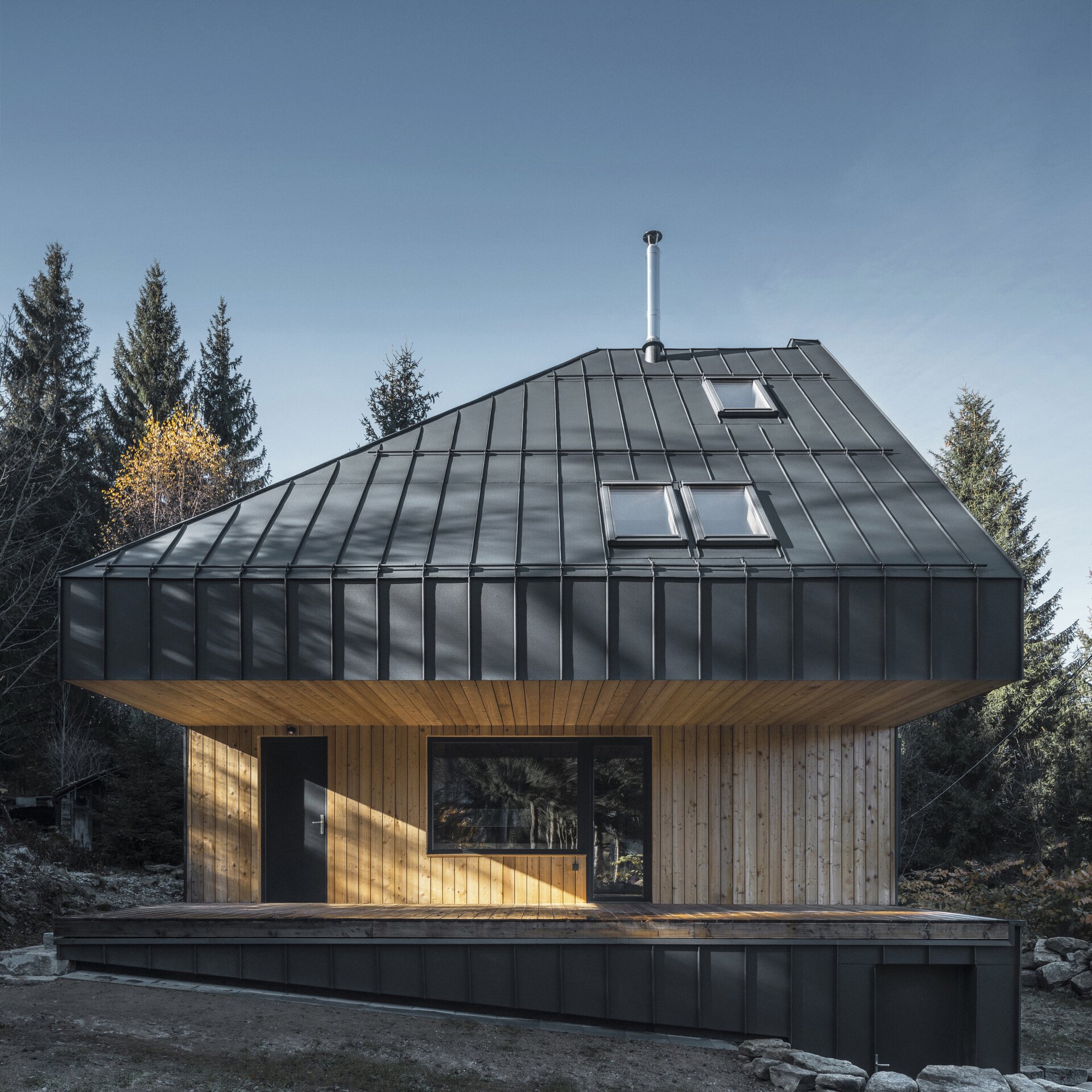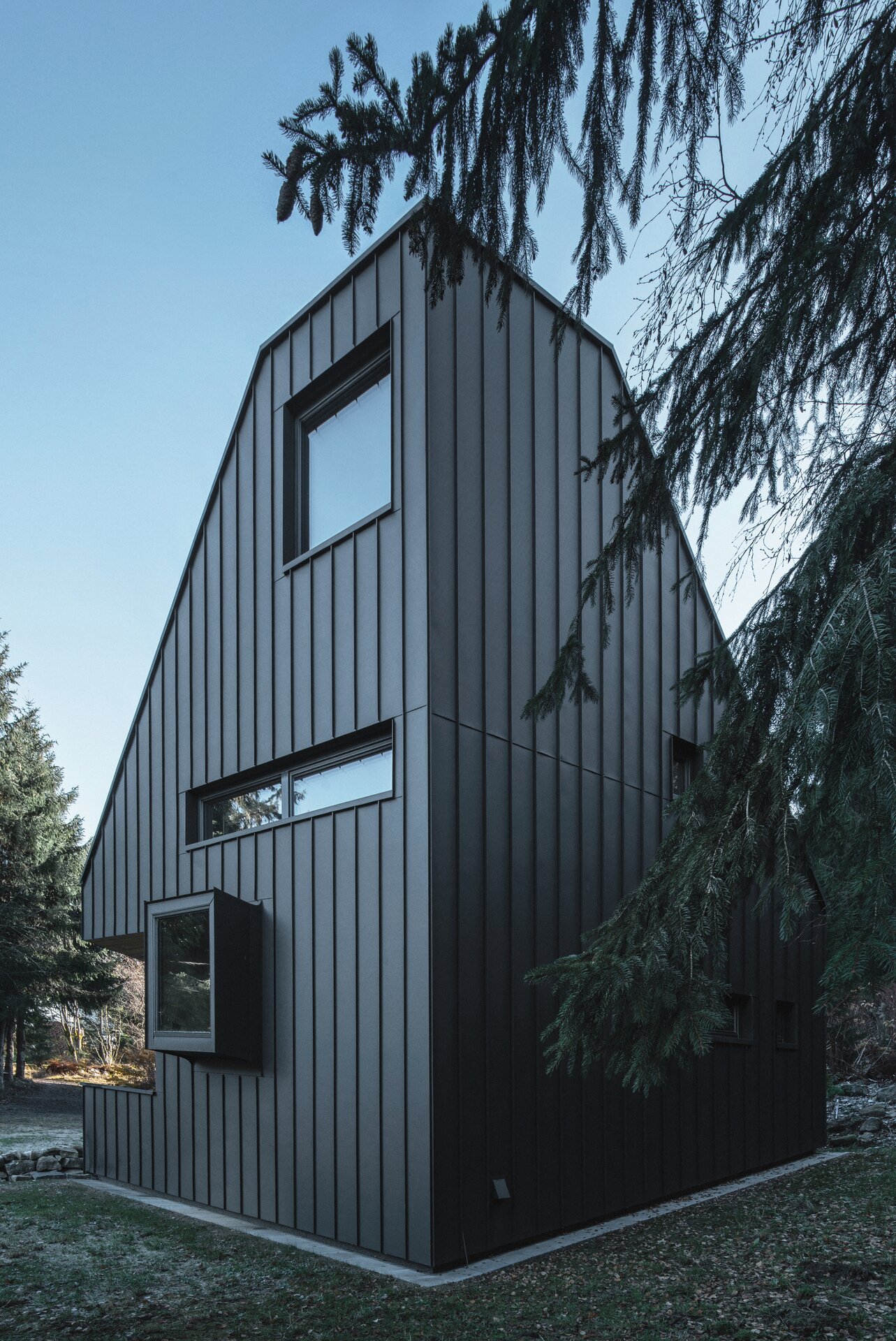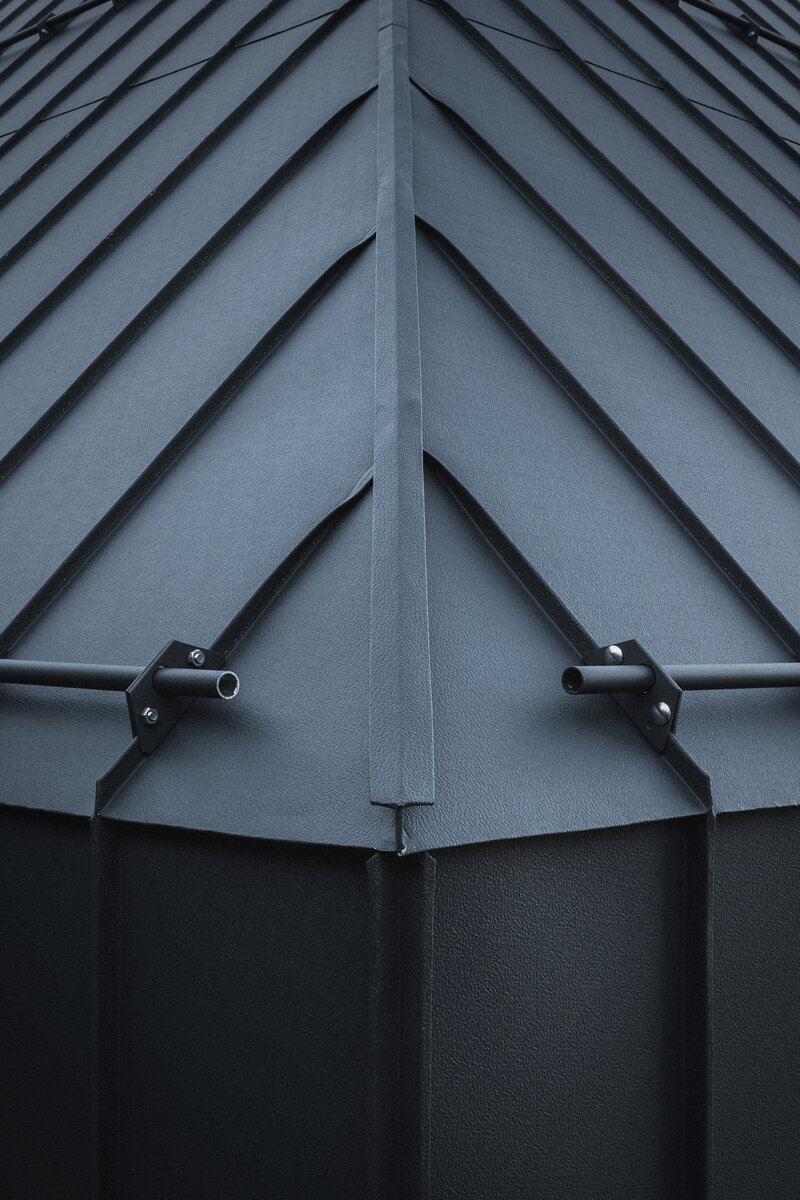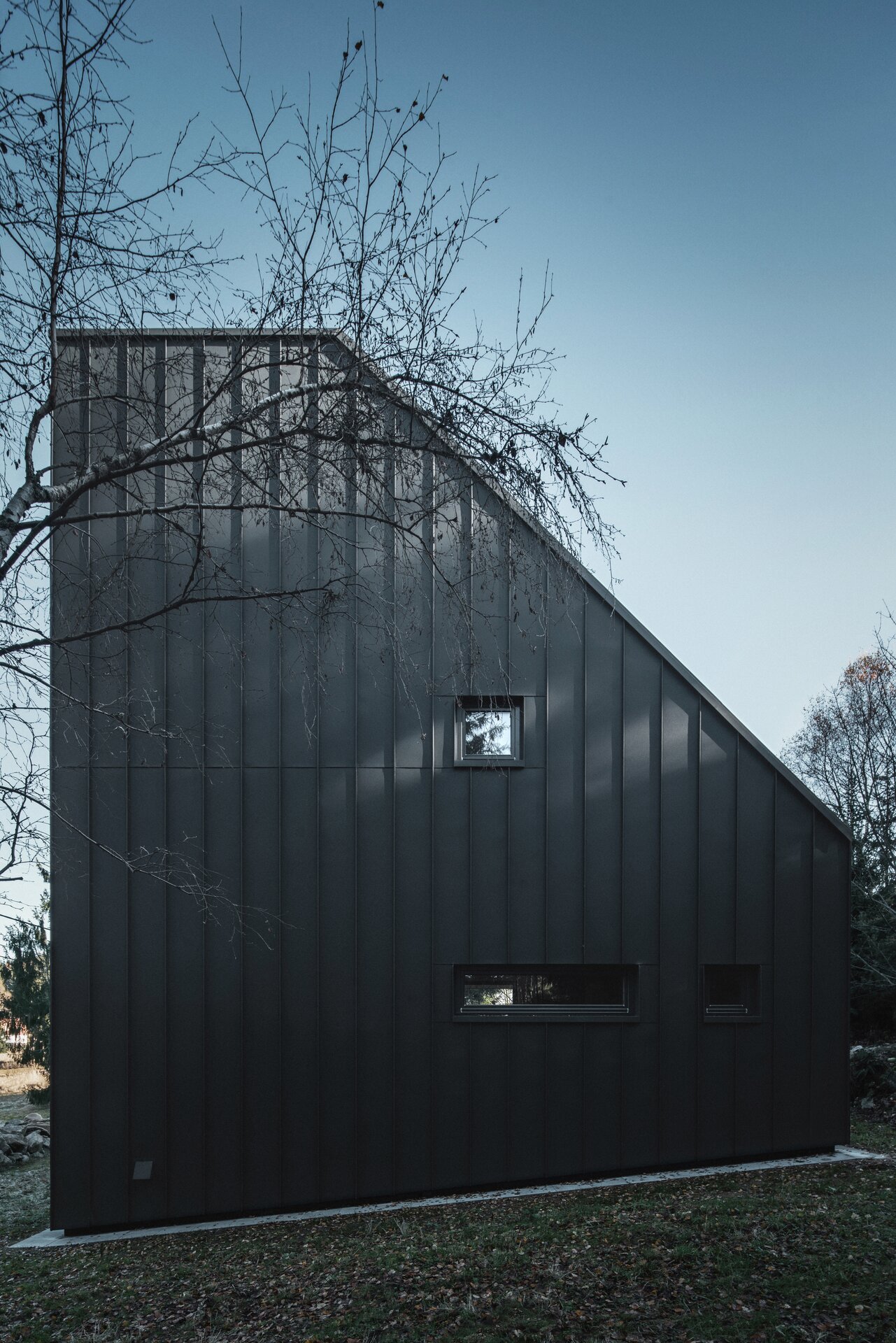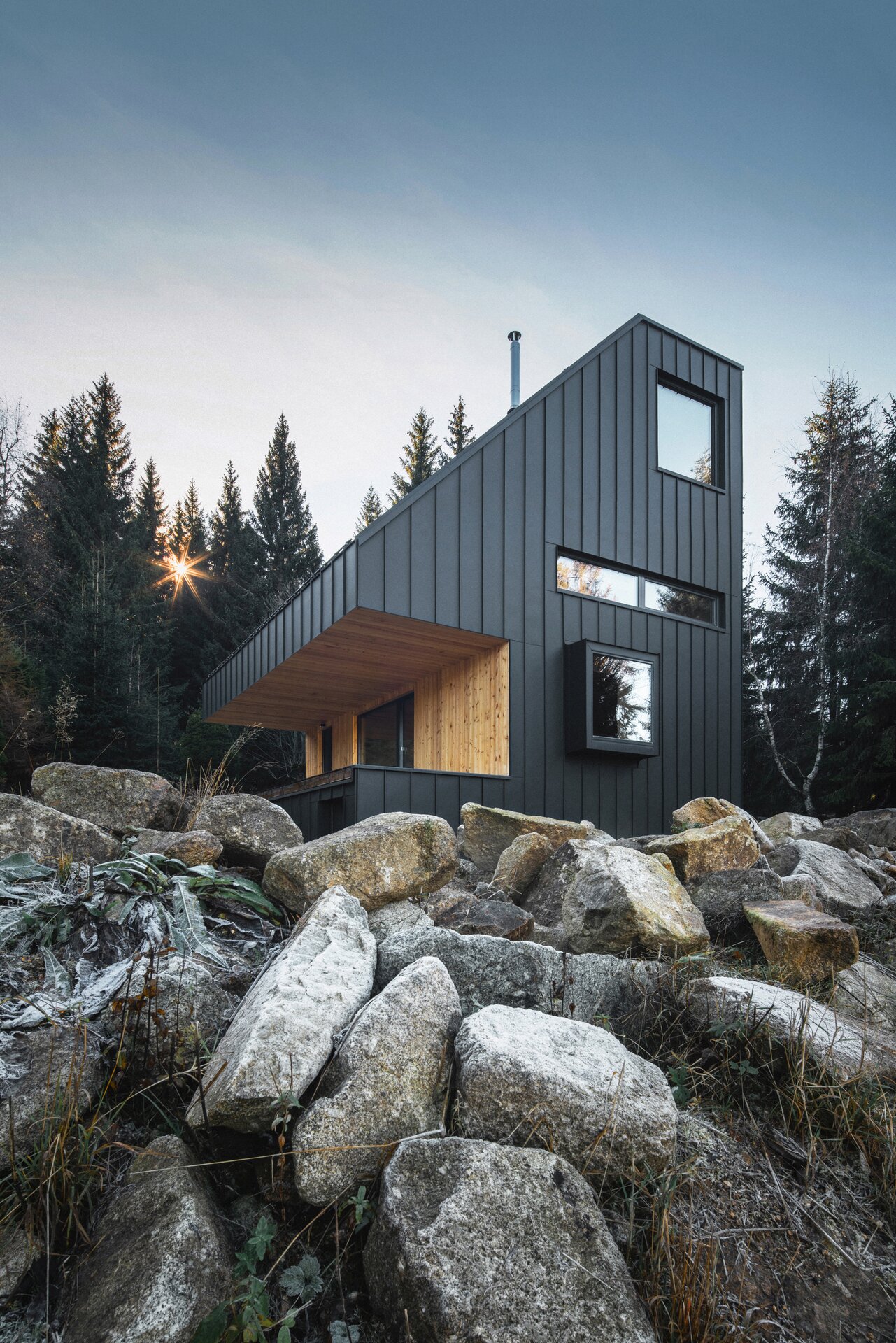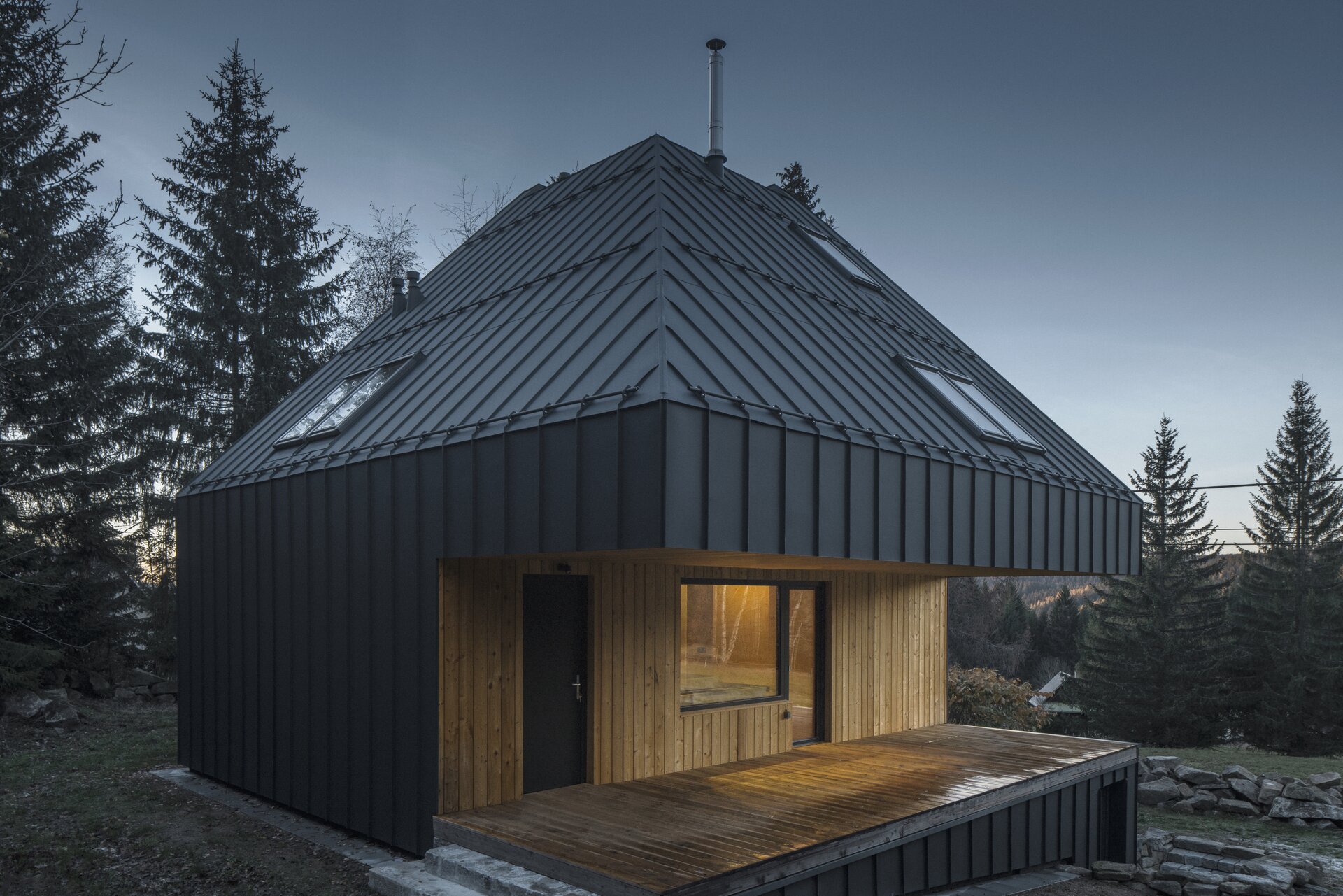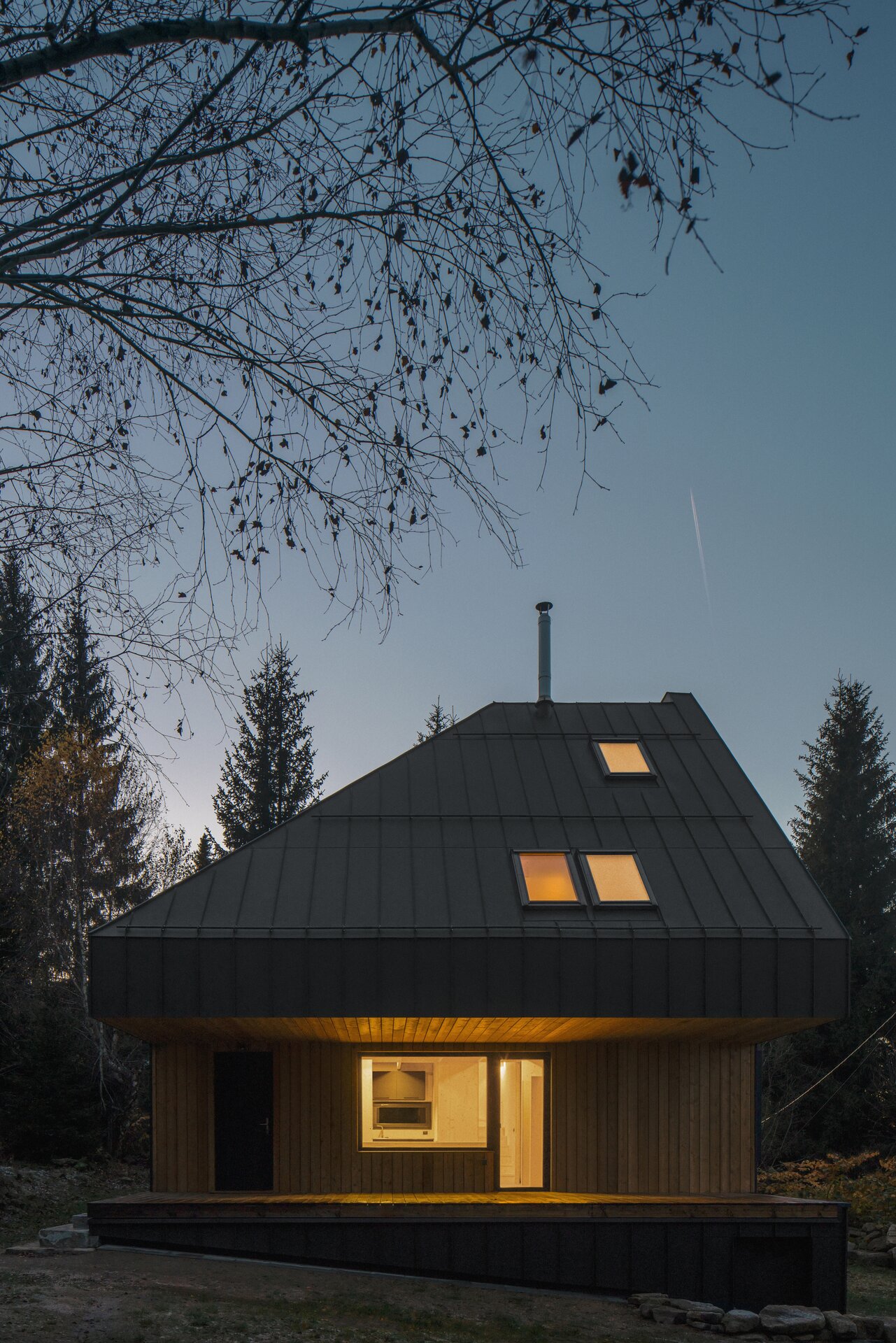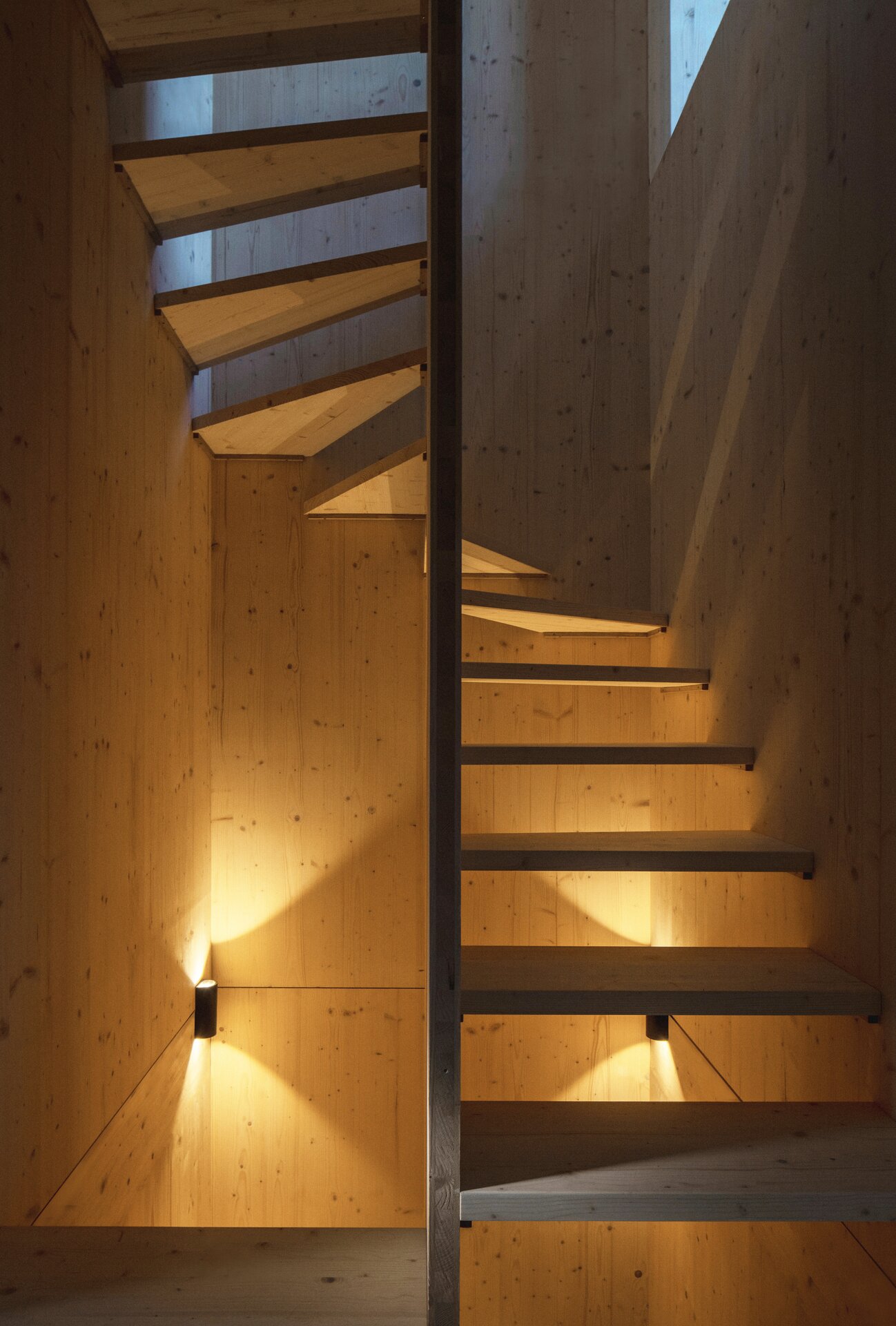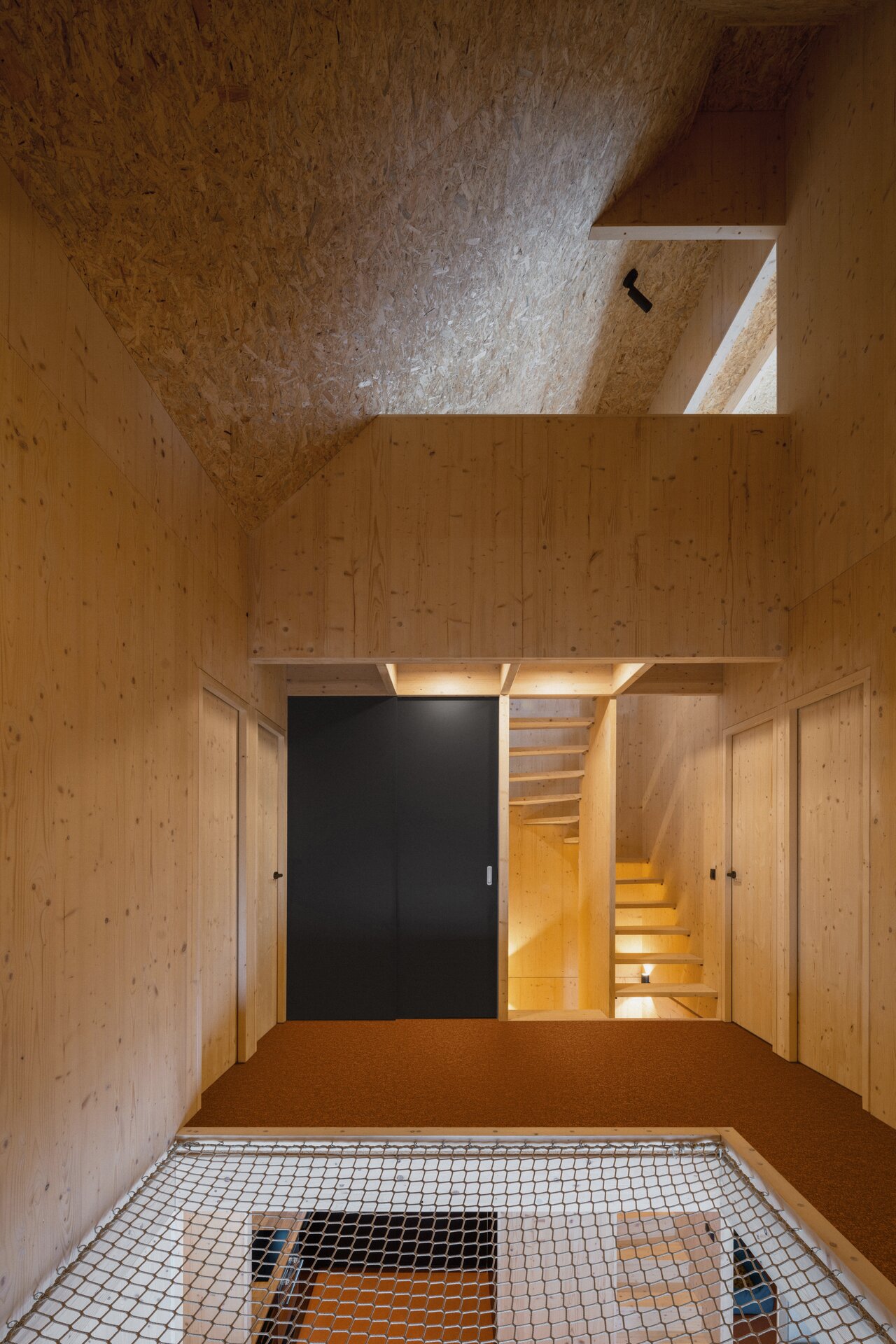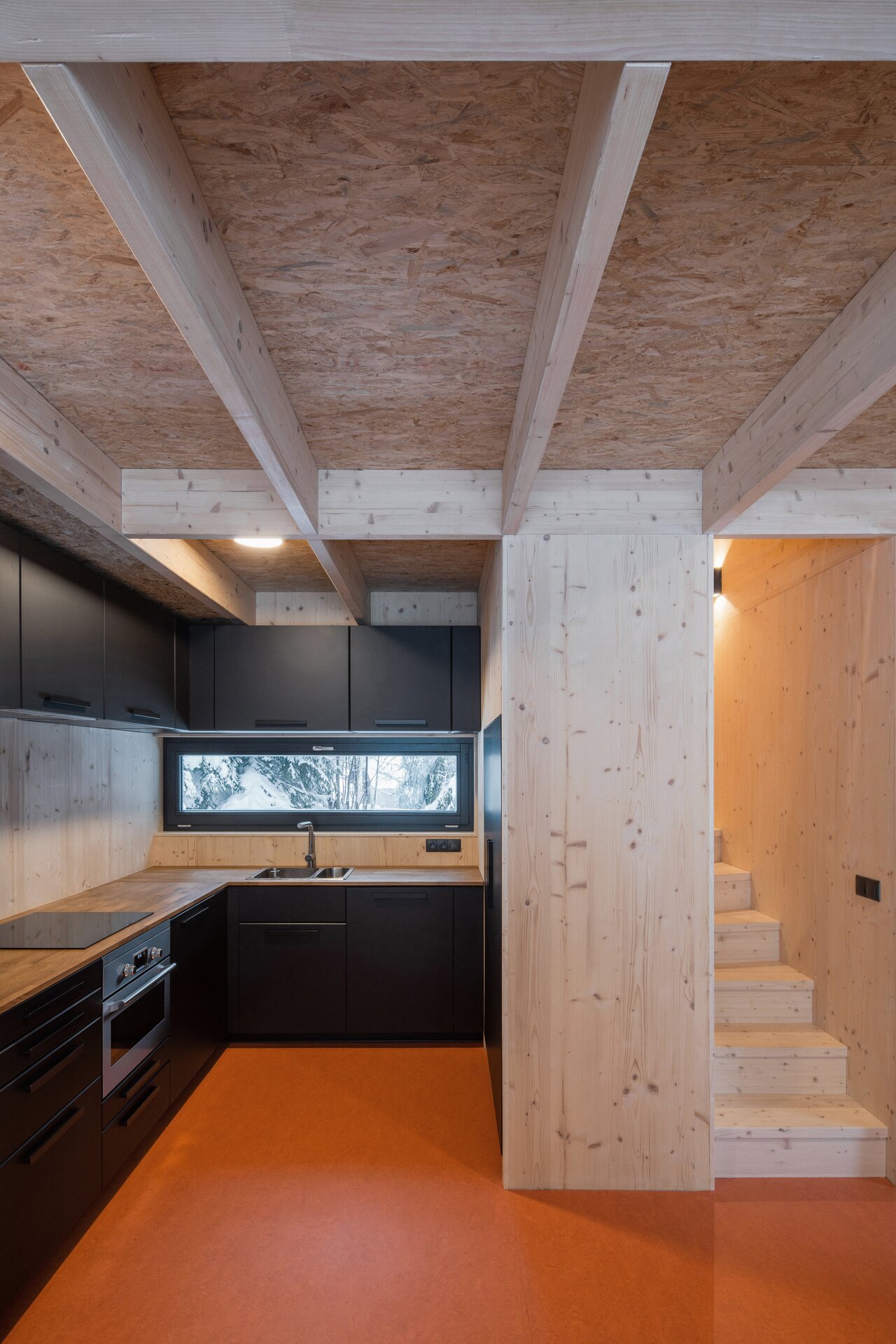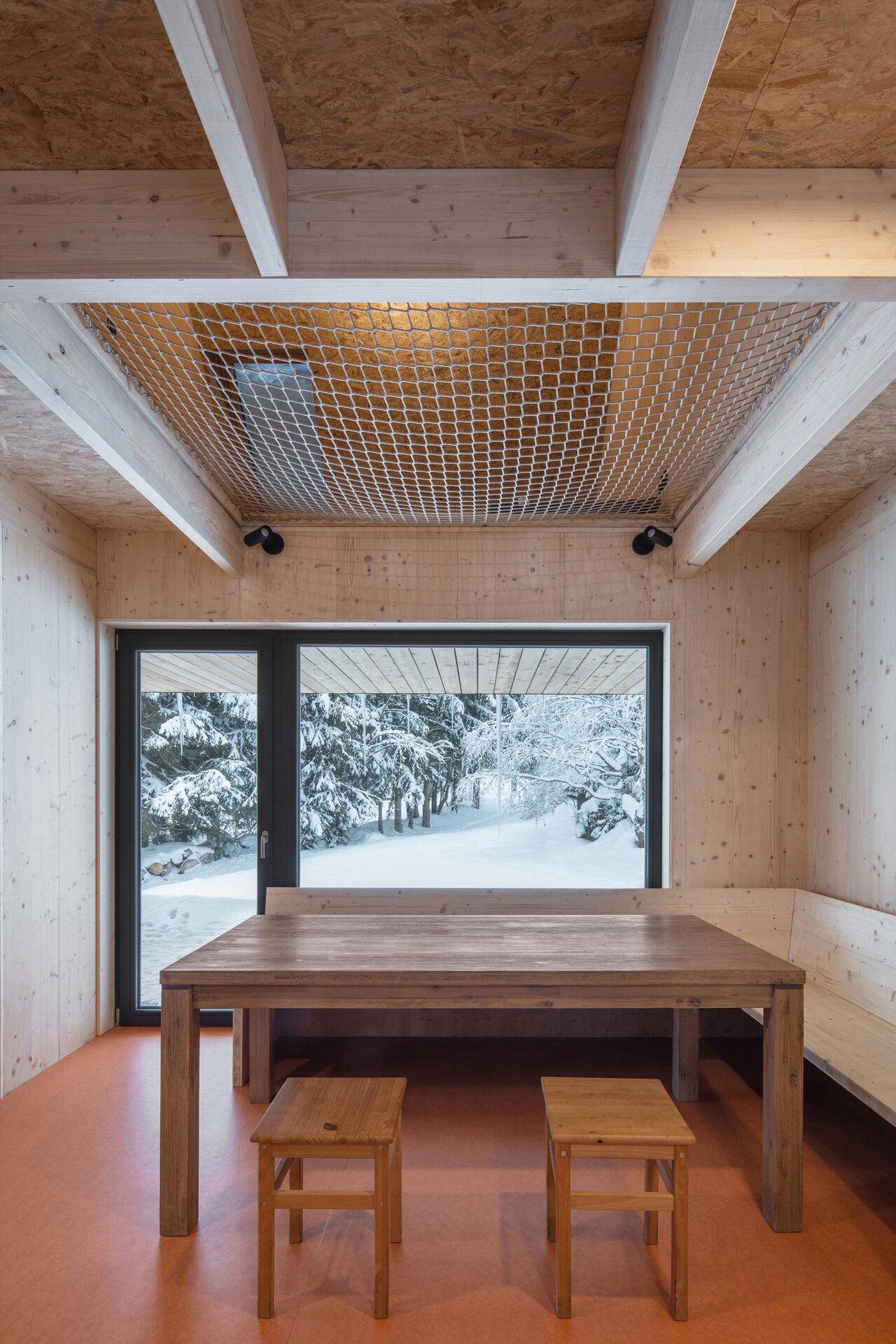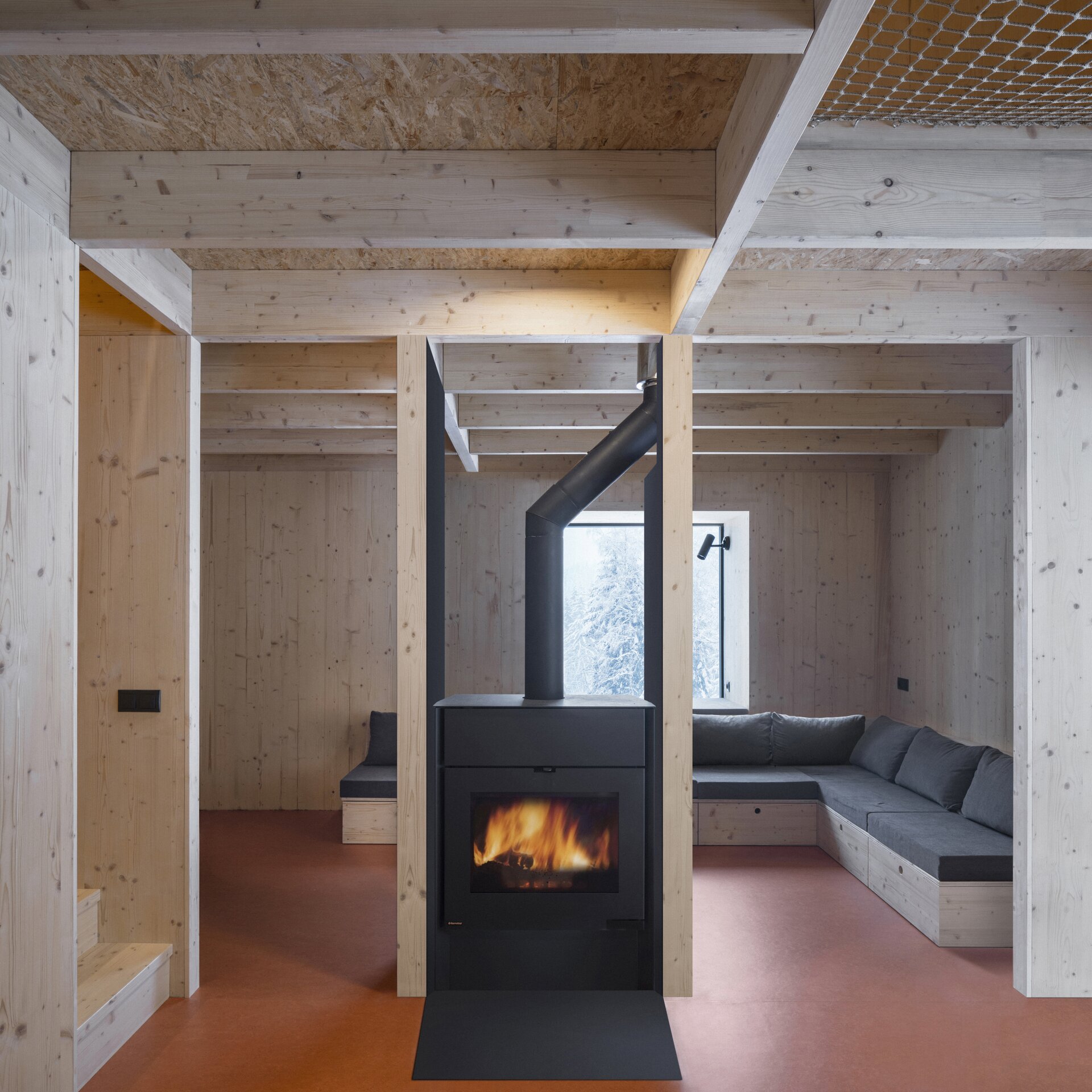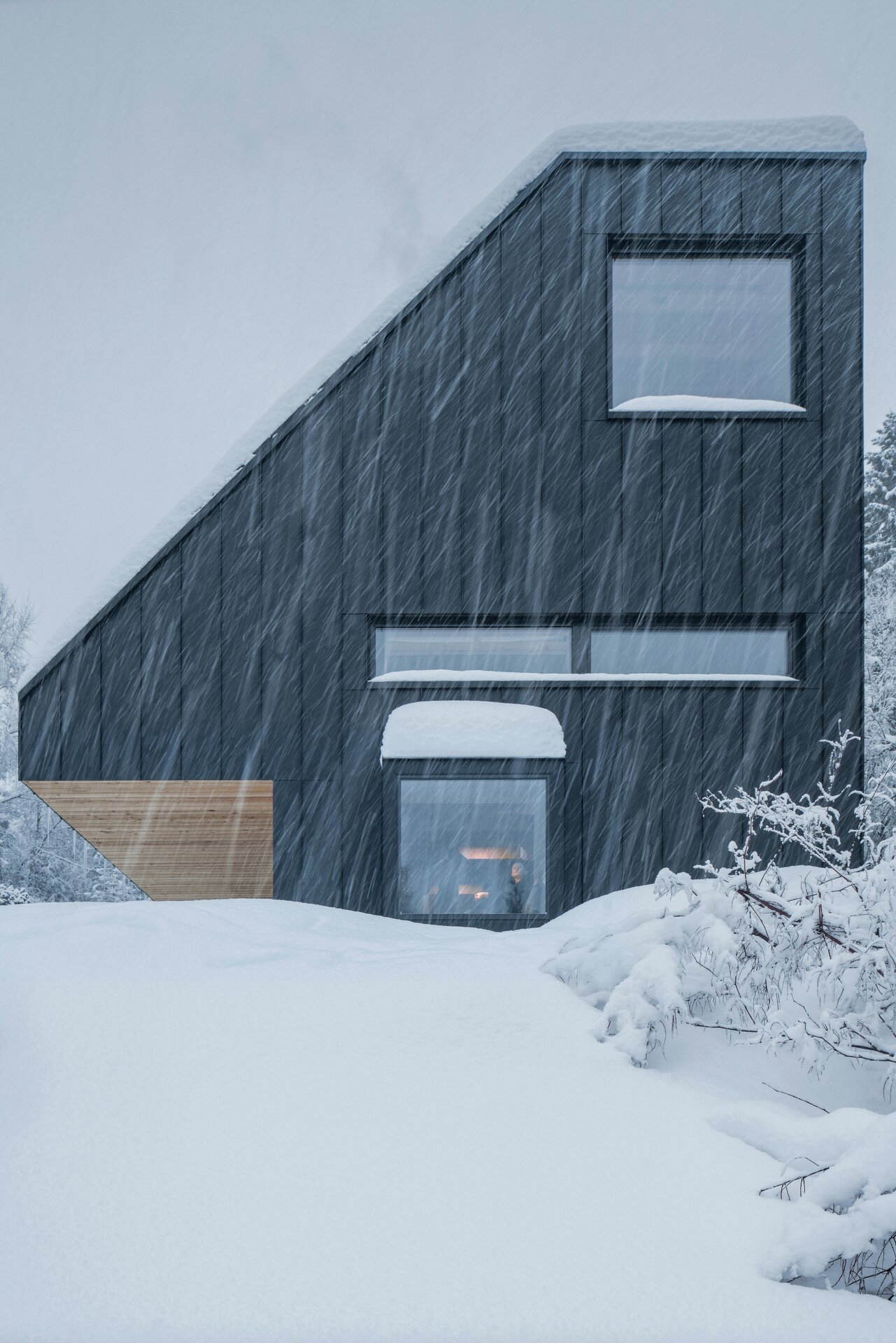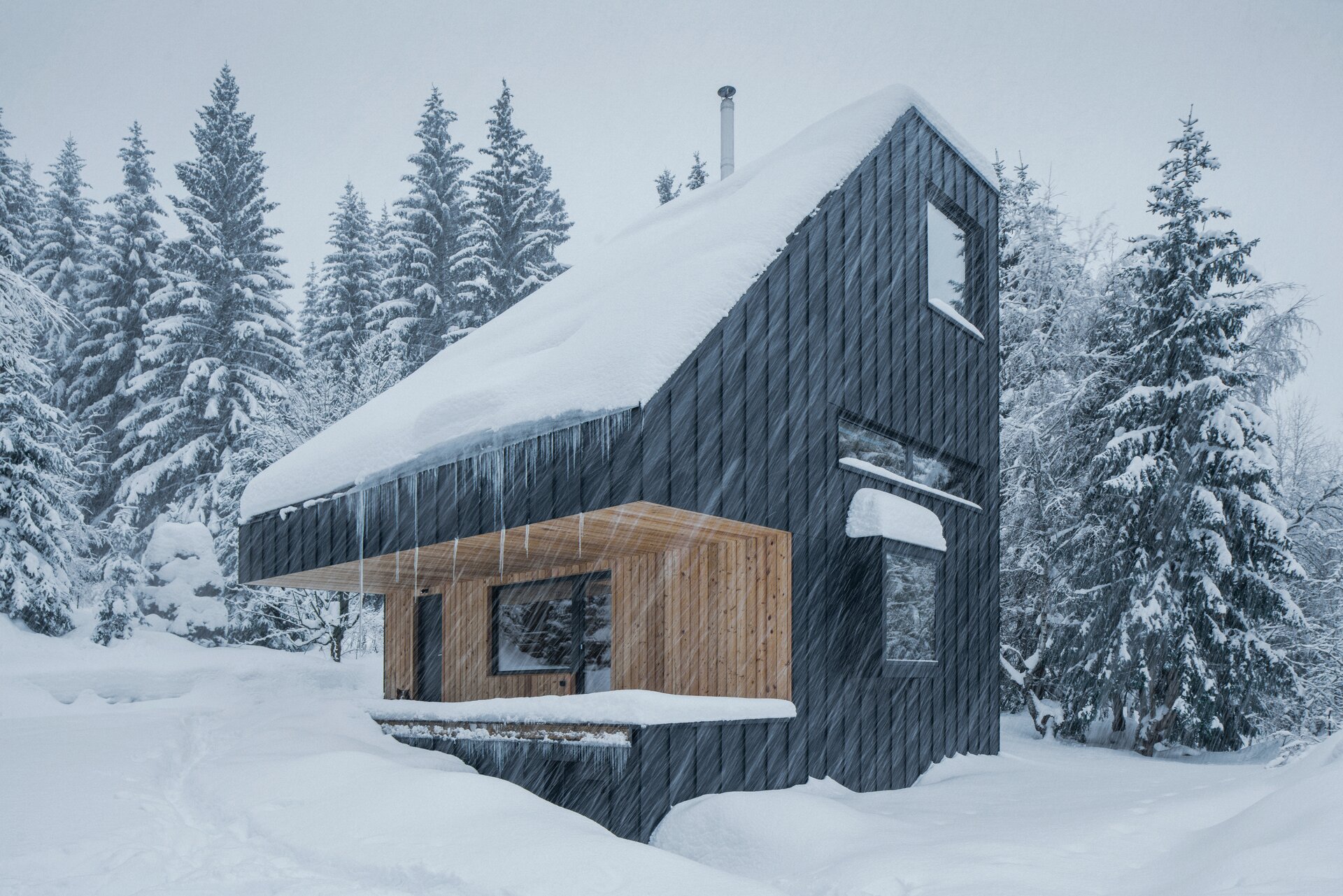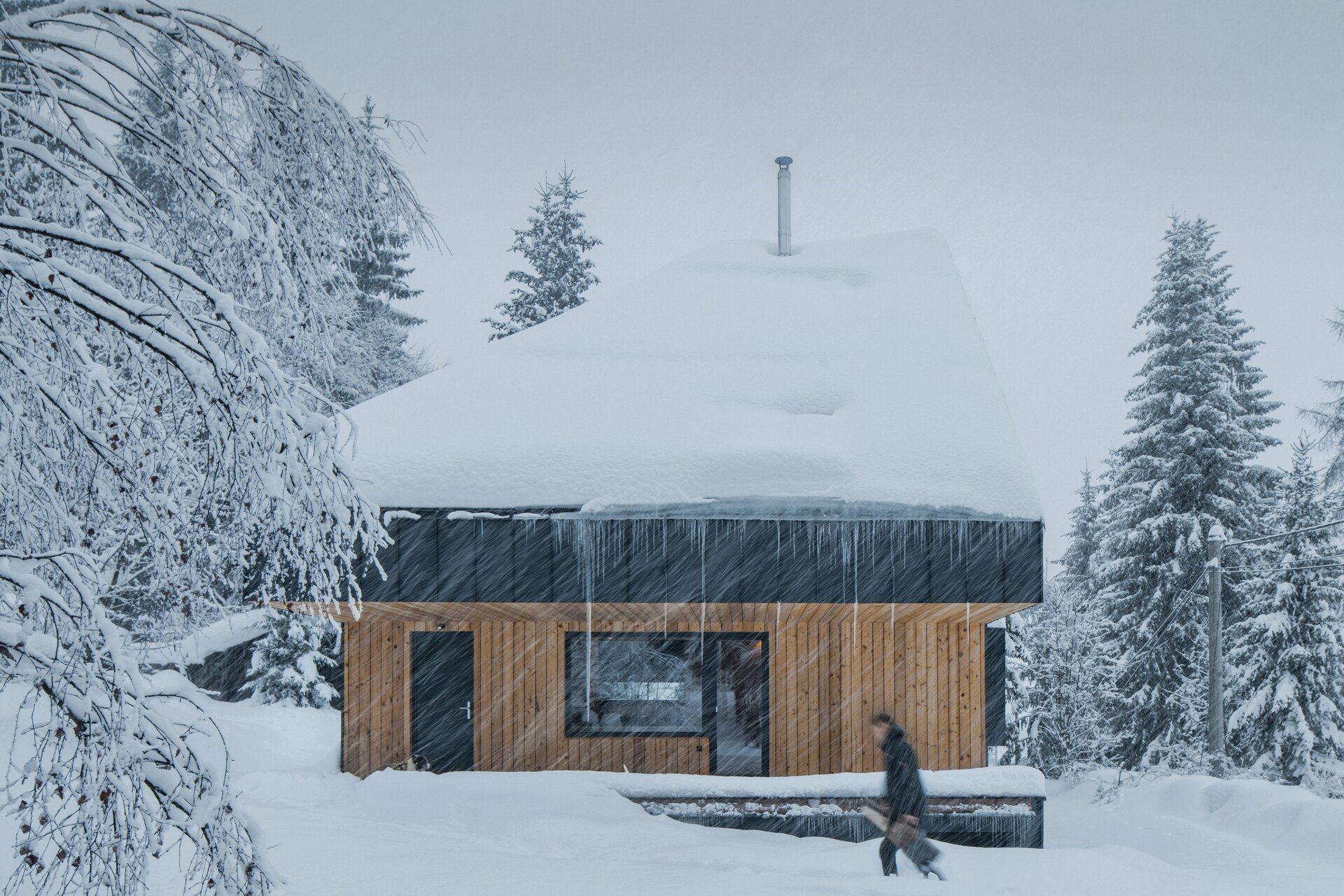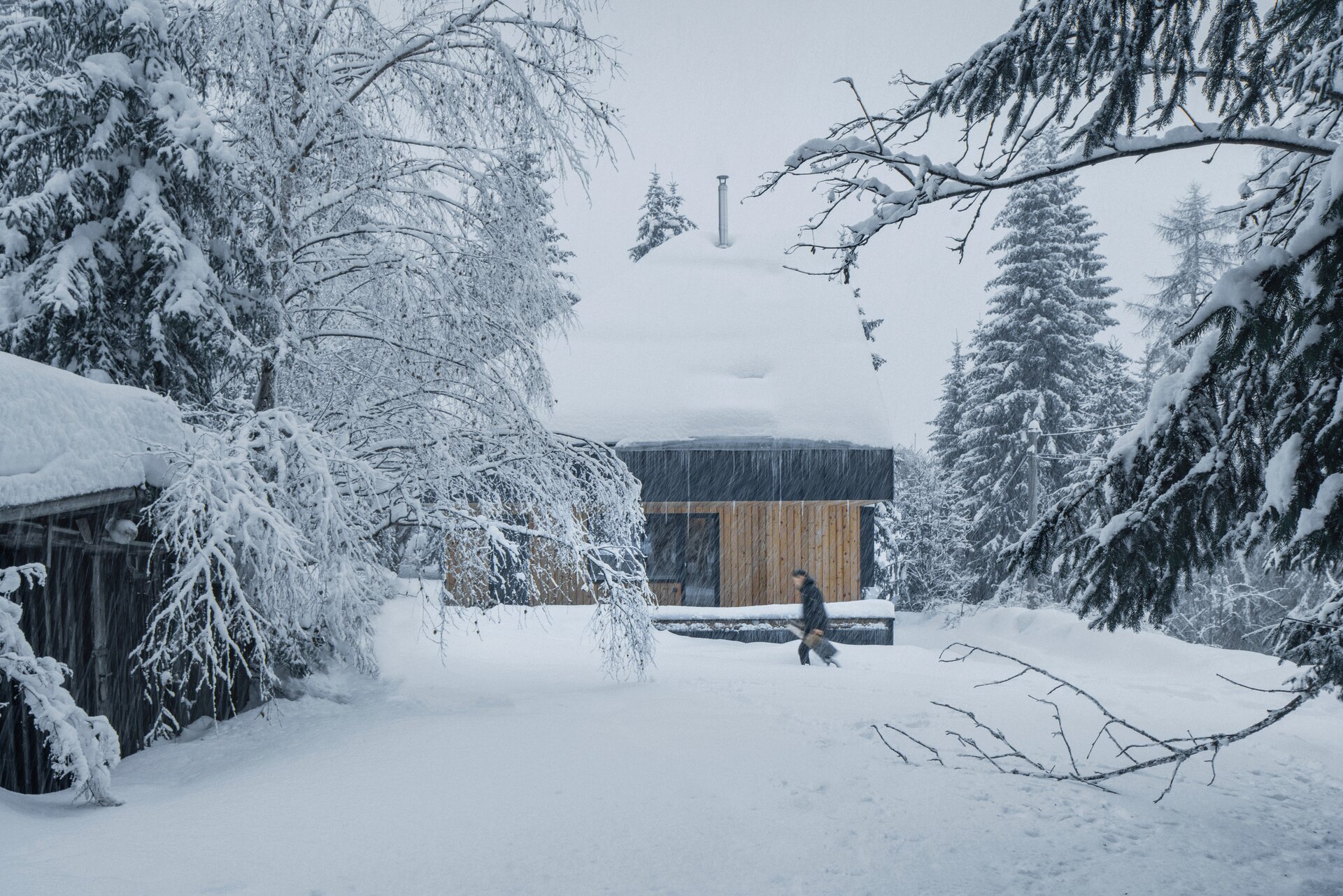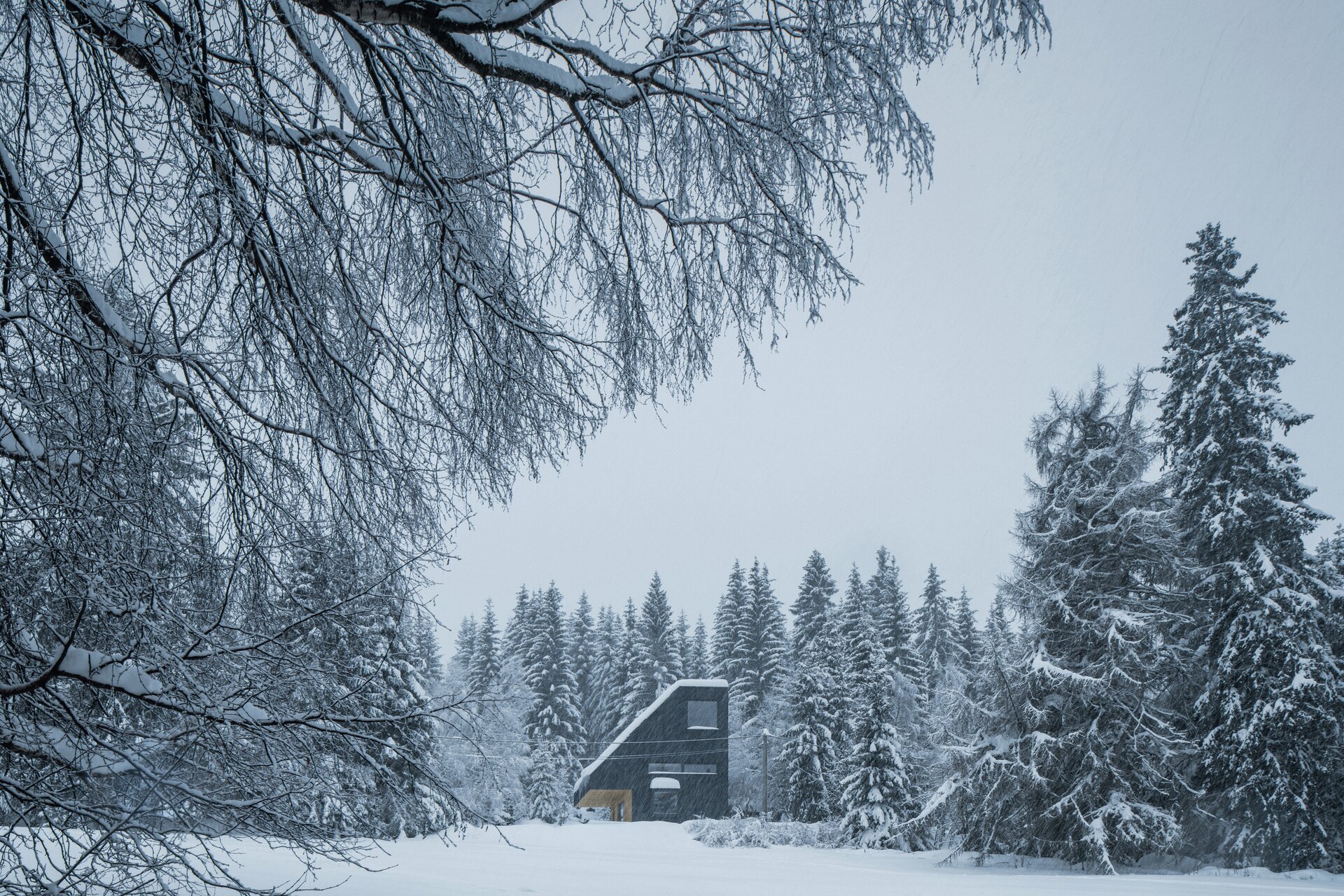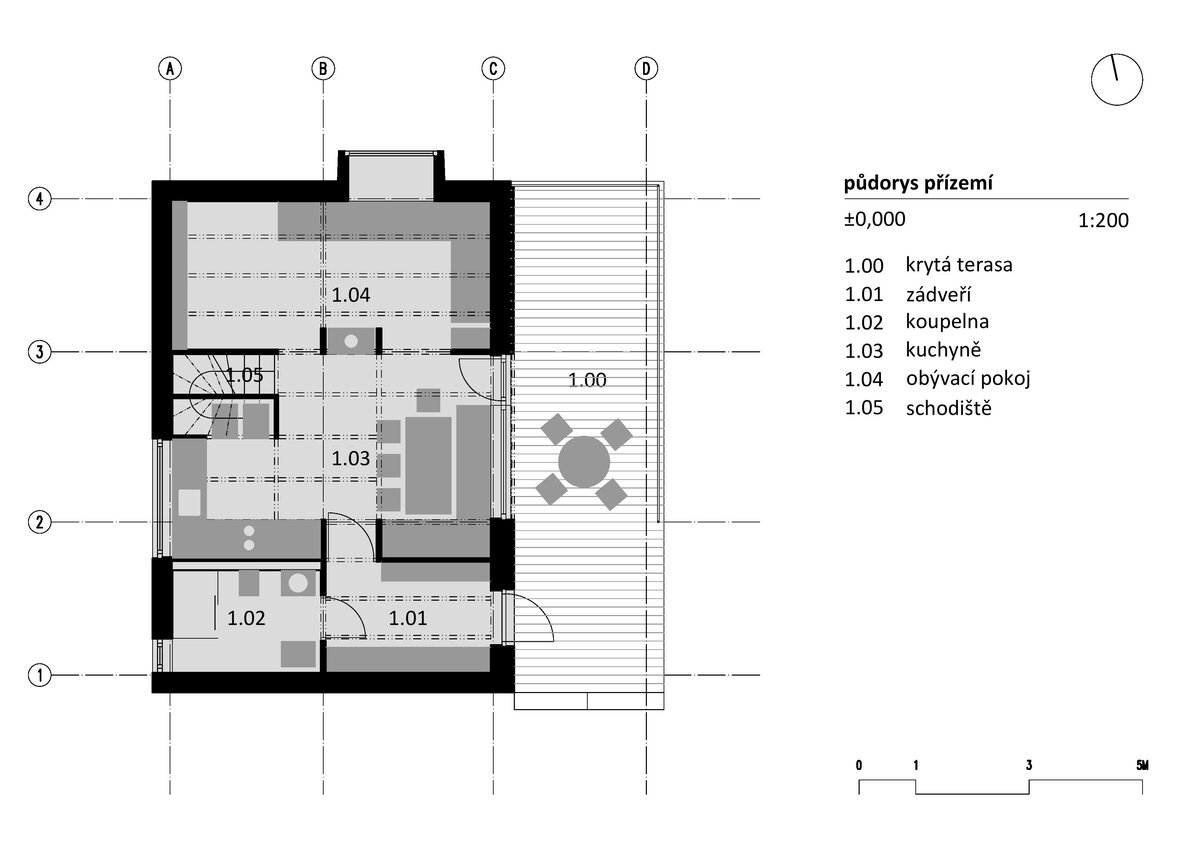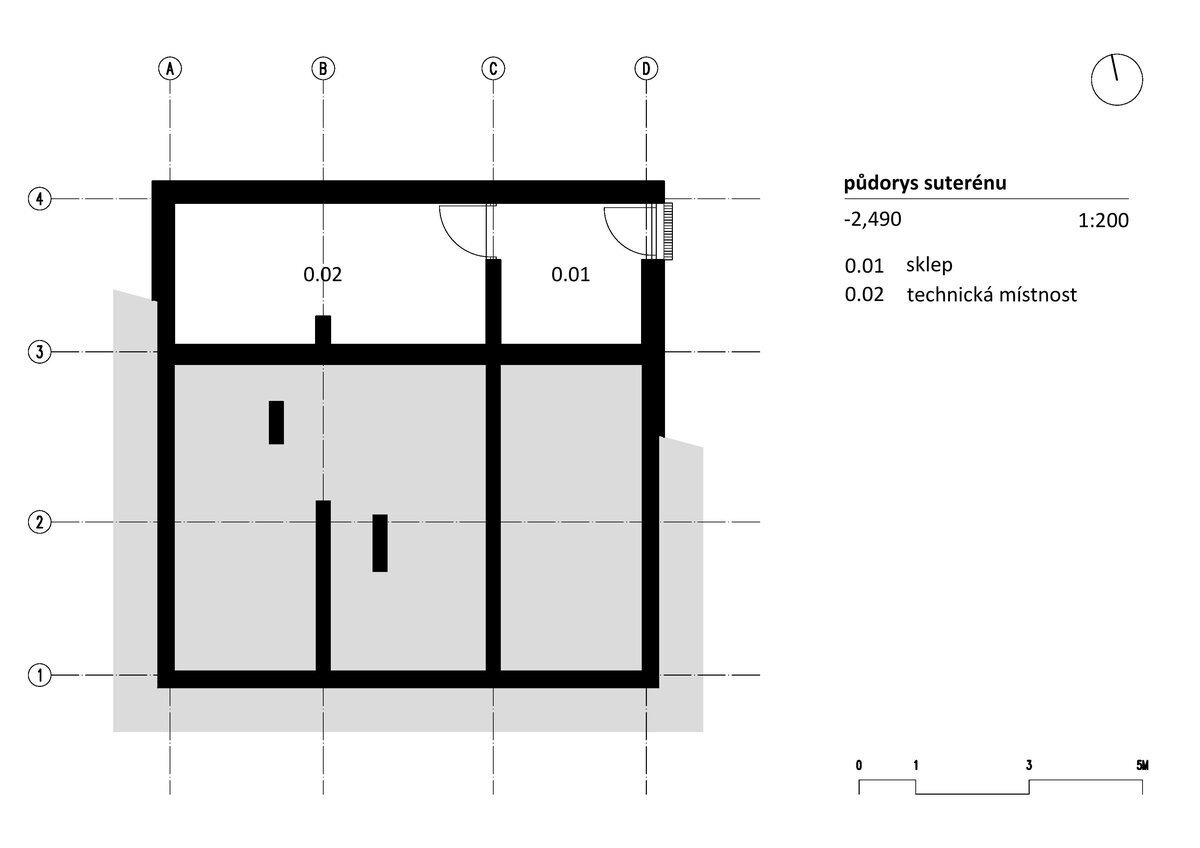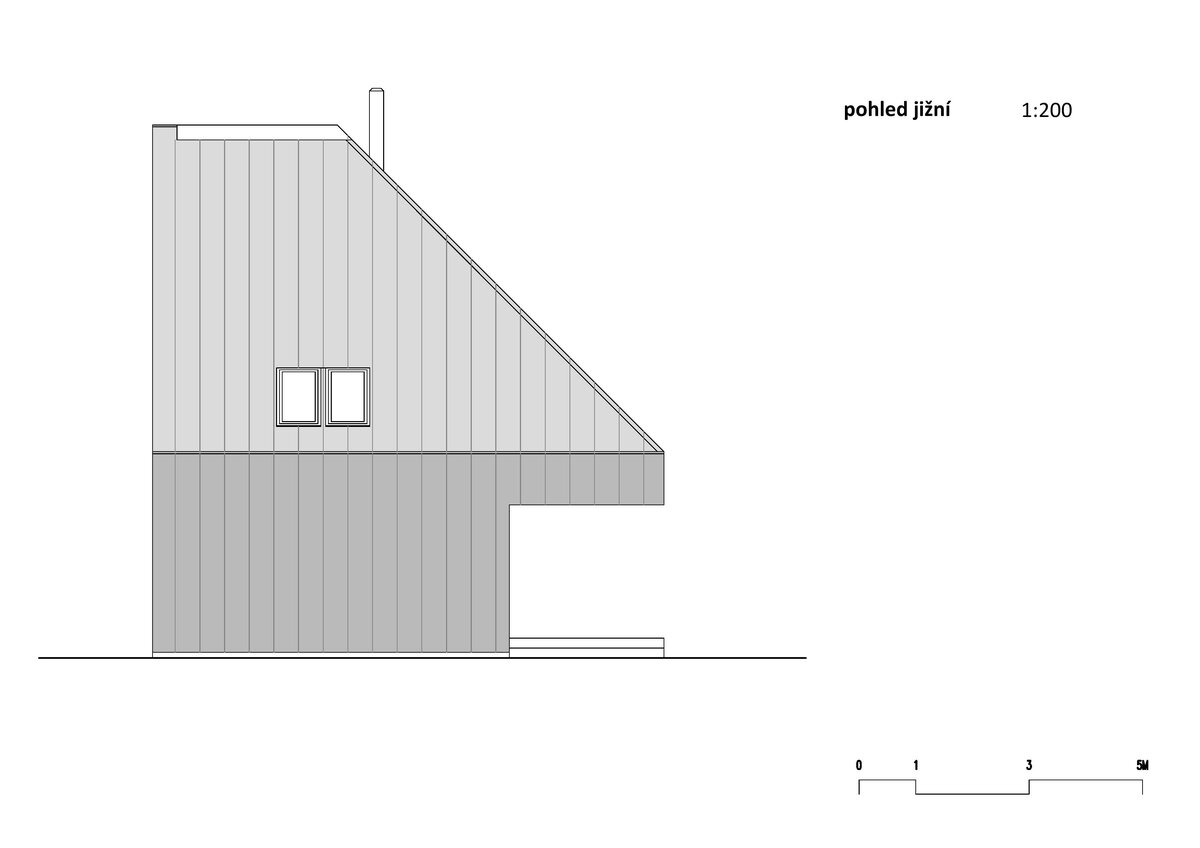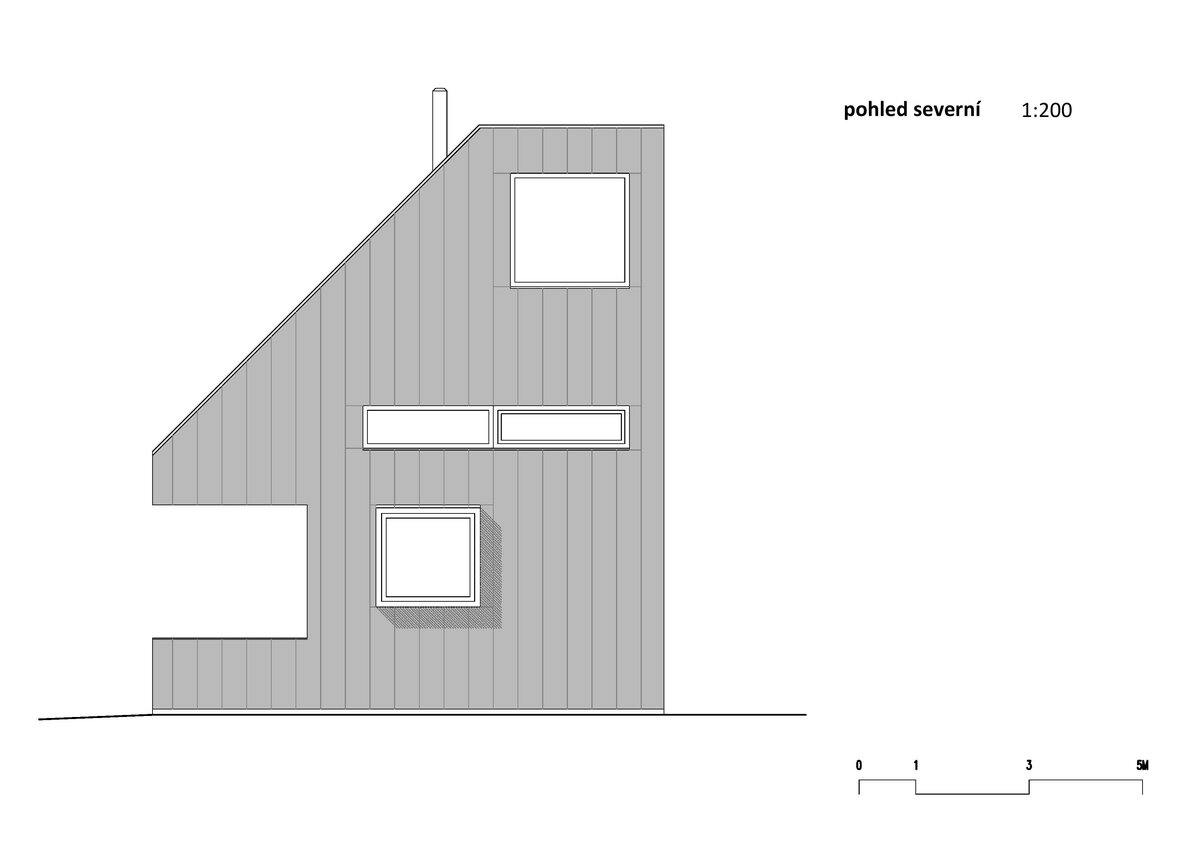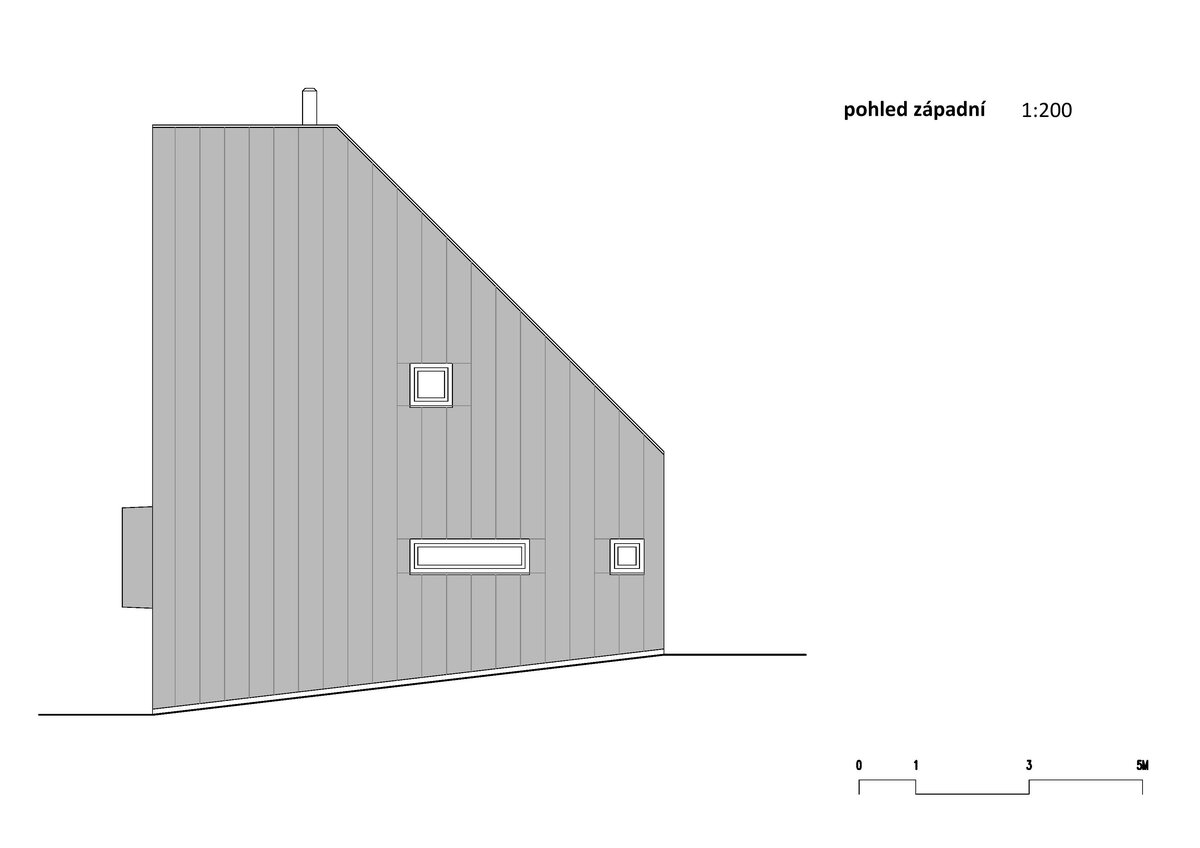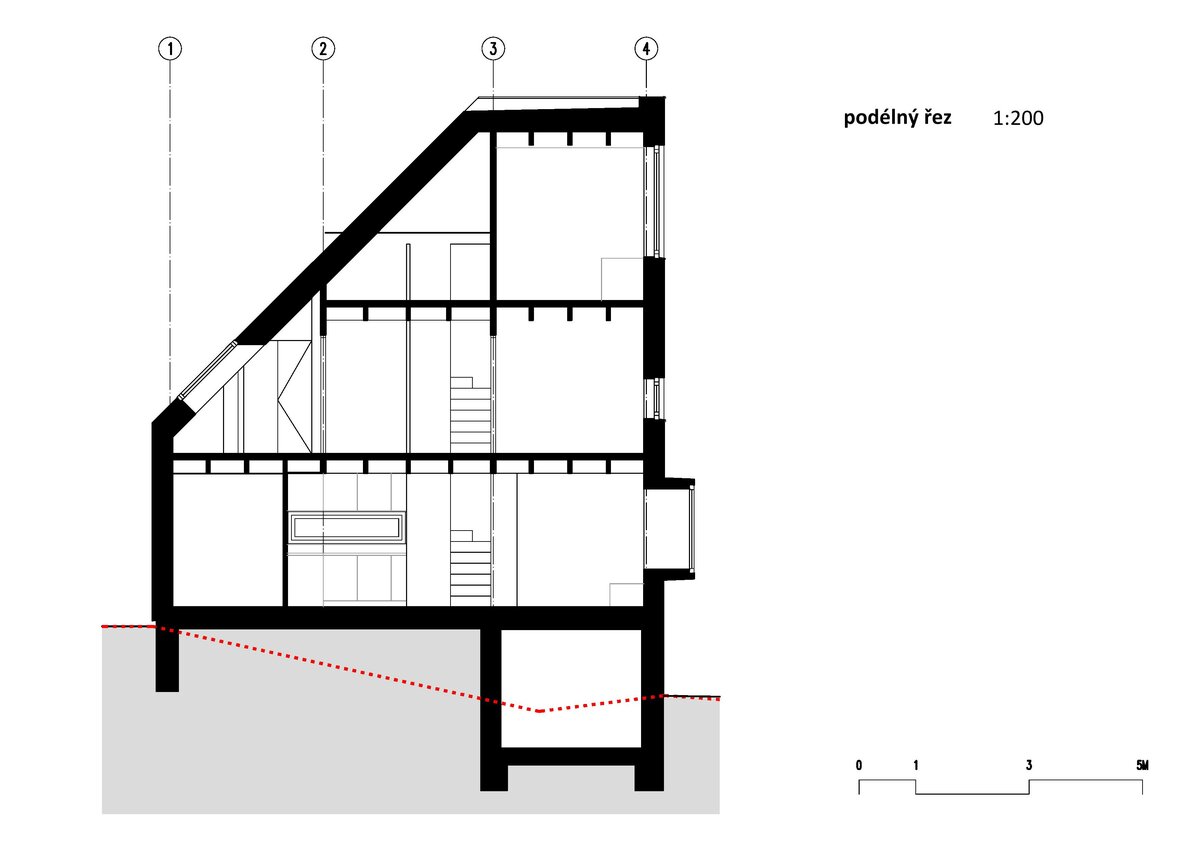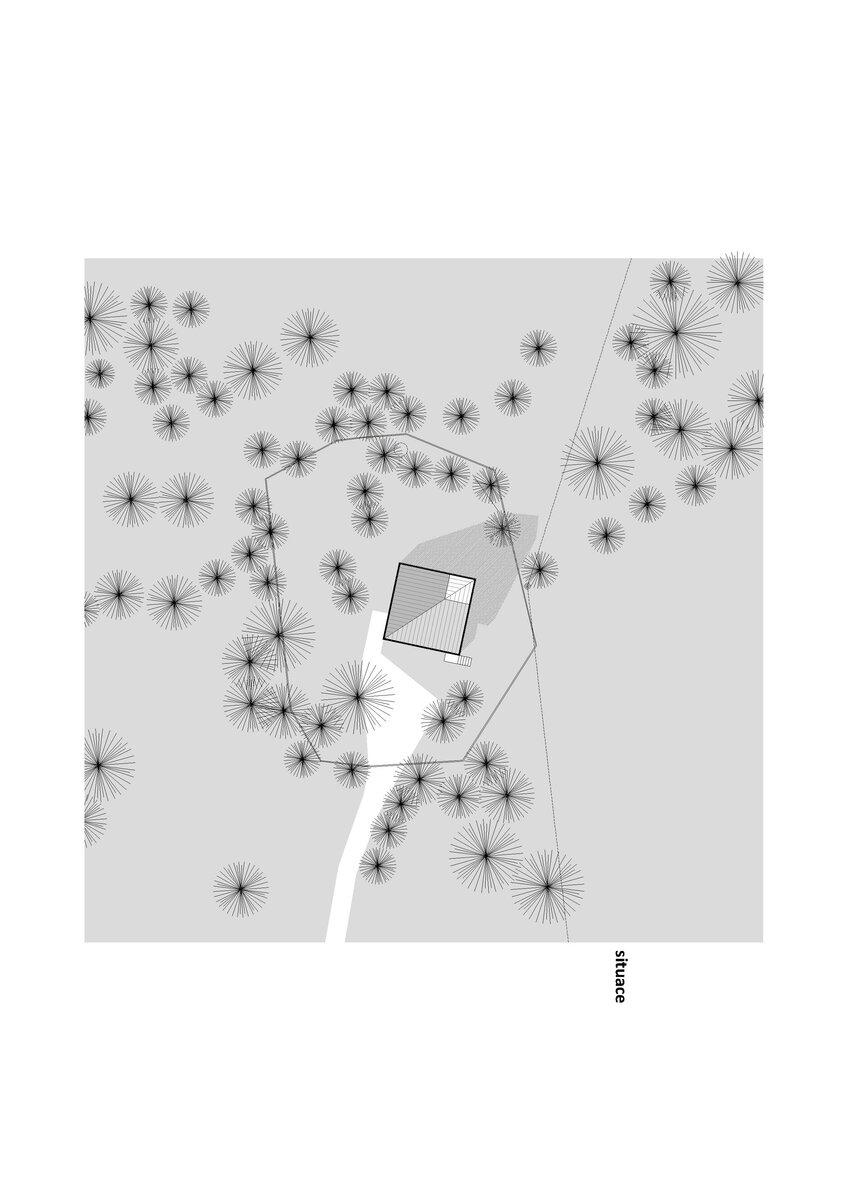| Author |
Ing. arch. David Zámečník / NEW HOW architekti |
| Studio |
|
| Location |
Nové Hamry, Krušné hory (okr. Karlovy Vary, Karlovarský kraj) |
| Investor |
Petra Lehká a David Zámečník |
| Supplier |
dodavatel dřevěné konstrukce - 3AE, dodavatel zámečnických prací - Alia system, schodiště a truhlářské práce - Petr Višňovský, koupelny - SIKO |
| Date of completion / approval of the project |
February 2022 |
| Fotograf |
|
The house is only a few meters from the edge of the forest, from where it grows up towards the tops of spruces. Nestled among the trees, almost hidden compared to other white plaster houses next door, it almost looks as if it has been swallowed up by forests…
The design is based on the local nature and color, in which you can find all shades of gray. You can see gray in the shades of trees, in granite and basalt rocks, and even in the dark green needles and trunks of the local spruces, which are so typical of the forests of the Ore Mountains. From the beginning, it was clear that the facade and roof of the holiday home should be covered with aluminum in a similar dark color. The façade structure was used to create an intense rough surface that vaguely resembles oiled black wood and slow-growing spruce trunks. However, its color and surface are not the only striking aspects of this house.
From a formal point of view, the new building is represented by an aerodynamic but angular figure, where classic elements, such as the roof and the wall, give way to a clear shape and merge with each other. The appearance was created through many precisely set spatial scenes of the interior and on the basis of seasonally changing local climatic conditions, as the snow load in winter requires the choice of a steep roof angle. The idea of a "lookout tower" also determines the height of the house from the inside. It should resemble a tower rather than a house and should also serve as a hideaway. Instead of the usual two floors, three levels of action were created - each with its own character. At the highest level, the house serves as a studio, library and also as a refuge. A square window with a side of 2.5 m long frames the view of the treetops, the sky and the landscape. One floor lower, in addition to the bathroom and the open gallery space, we can also find sleeping corners here. The floor is partly formed by a net that establishes a connection with the lowest level both visually and acoustically and functions as a rest area. It's a place where you can unleash your imagination. Sitting in a net and not having solid ground underfoot has something to do with the dream of flying, as well as looking up at the sky. The lowest level of the house is dominated by the main social area with a kitchen and a central fireplace - a place of meeting and lively conversation. The technical background is located in a partially sunken basement.
In the near future, the house will be inhabited throughout the year. For this reason, the house already has places to sleep for at least ten people. In addition, the energy concept of the house should be expanded in the future as well. It is currently heated by an open fireplace and electricity. In addition, the house is already equipped with connection points for the rooftop photovoltaic system and for vertical wind turbines that help realize the idea of energy self-sufficient life. It is a construction of wooden CLT panels based on a foundation of poured concrete blocks.
Green building
Environmental certification
| Type and level of certificate |
-
|
Water management
| Is rainwater used for irrigation? |
|
| Is rainwater used for other purposes, e.g. toilet flushing ? |
|
| Does the building have a green roof / facade ? |
|
| Is reclaimed waste water used, e.g. from showers and sinks ? |
|
The quality of the indoor environment
| Is clean air supply automated ? |
|
| Is comfortable temperature during summer and winter automated? |
|
| Is natural lighting guaranteed in all living areas? |
|
| Is artificial lighting automated? |
|
| Is acoustic comfort, specifically reverberation time, guaranteed? |
|
| Does the layout solution include zoning and ergonomics elements? |
|
Principles of circular economics
| Does the project use recycled materials? |
|
| Does the project use recyclable materials? |
|
| Are materials with a documented Environmental Product Declaration (EPD) promoted in the project? |
|
| Are other sustainability certifications used for materials and elements? |
|
Energy efficiency
| Energy performance class of the building according to the Energy Performance Certificate of the building |
|
| Is efficient energy management (measurement and regular analysis of consumption data) considered? |
|
| Are renewable sources of energy used, e.g. solar system, photovoltaics? |
|
Interconnection with surroundings
| Does the project enable the easy use of public transport? |
|
| Does the project support the use of alternative modes of transport, e.g cycling, walking etc. ? |
|
| Is there access to recreational natural areas, e.g. parks, in the immediate vicinity of the building? |
|
